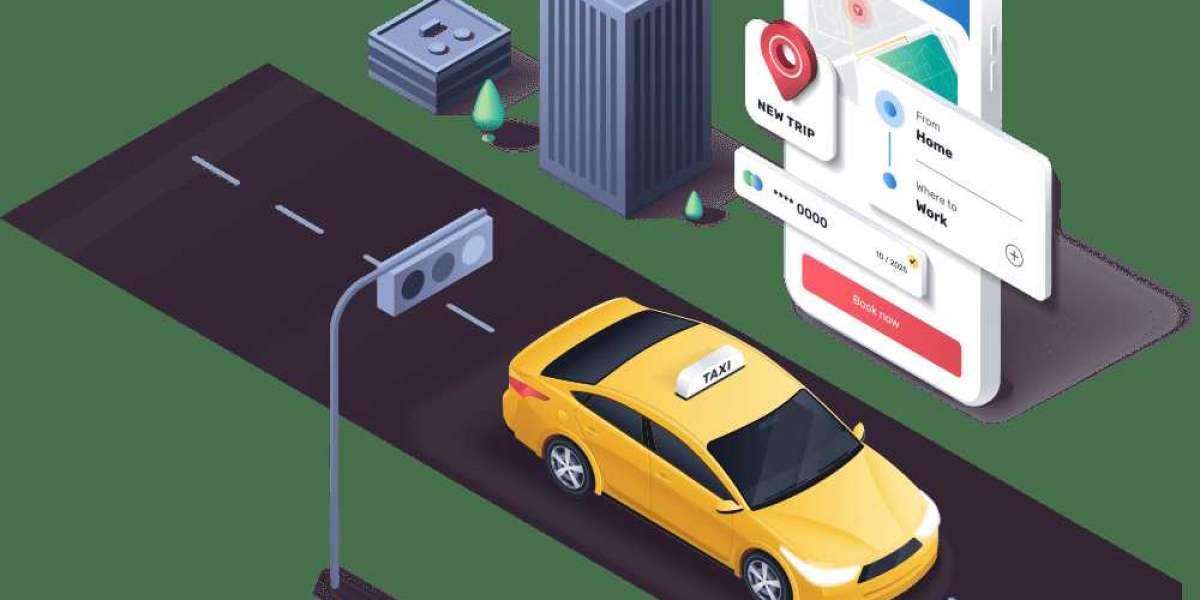Introduction
Overview of Taxi Dispatch Systems
A taxi dispatch system is a platform that facilitates the allocation and management of taxi rides, ensuring that drivers are efficiently matched with passengers. This system incorporates various technologies to streamline operations, from booking to route optimization and payment processing.
Importance and Relevance
In today's fast-paced urban environments, efficient transportation solutions are crucial. Taxi dispatch systems enhance the efficiency of taxi services, reduce waiting times, and improve the overall passenger experience. They are indispensable in managing large fleets and addressing the dynamic demands of urban transportation.
History and Evolution
Early Taxi Dispatch Methods
Initially, taxi dispatching relied heavily on manual processes. Dispatchers used radios and telephones to communicate with drivers, which was time-consuming and prone to errors. This method required a significant human workforce and was limited by the dispatchers' ability to manage multiple requests simultaneously.
Technological Advancements
The advent of GPS technology and mobile communication transformed taxi dispatch systems. GPS allowed for real-time tracking of vehicles, while mobile apps enabled passengers to book rides directly from their smartphones. These advancements significantly improved the efficiency and accuracy of dispatch operations.
Technical Specifications
Core Components
A taxi dispatch system consists of several core components: the dispatcher console, driver app, passenger app, and backend server. The dispatcher console is used by operators to manage bookings and monitor the fleet. The driver app provides navigation and ride details, while the passenger app allows users to book rides and track their taxis.
Software Requirements
The software for a taxi dispatch system must support real-time data processing and communication. It should be scalable to accommodate a growing number of users and flexible to integrate with various payment gateways and third-party services. Common programming languages used include Java, Python, and Swift.
Hardware Requirements
Hardware requirements vary based on the system's complexity. Basic systems may only require standard desktop computers and smartphones, while more advanced setups might include dedicated servers, GPS devices, and in-car tablets.
Types of Taxi Dispatch Systems
Manual Dispatch Systems
Manual dispatch systems involve human operators manually assigning rides to drivers. This method, although outdated, is still in use in some regions with limited technological infrastructure.
Automated Dispatch Systems
Automated dispatch systems use algorithms to assign rides based on proximity, traffic conditions, and driver availability. These systems are more efficient and reduce the potential for human error.
Cloud-Based Dispatch Systems
Cloud-based dispatch systems offer scalability and flexibility, allowing businesses to manage their operations remotely. They provide real-time updates and can easily integrate with other cloud services, making them ideal for large fleets.
Key Features of Taxi Dispatch Systems
Real-Time Tracking
Real-time tracking enables passengers and dispatchers to monitor the location of taxis in real-time. This feature improves safety and ensures timely pickups and drop-offs.
Driver and Passenger Apps
Driver and passenger apps are crucial for modern dispatch systems. They facilitate seamless communication, booking, and payment processes, enhancing the user experience.
Payment Integration
Integration with various payment methods, including credit cards, digital wallets, and cash, provides passengers with flexible payment options. This feature is essential for catering to diverse customer preferences.
Fleet Management
Fleet management tools help operators monitor vehicle health, manage driver schedules, and optimize routes. These tools are vital for maintaining operational efficiency and reducing costs.
Applications of Taxi Dispatch Systems
Urban Transportation
In urban areas, taxi dispatch systems play a critical role in managing the high demand for transportation. They help reduce traffic congestion by optimizing routes and improving vehicle utilization.
Corporate Travel
Corporate clients benefit from taxi dispatch systems through streamlined booking processes and detailed reporting capabilities. These systems offer tailored services for business travel, enhancing convenience and efficiency.
Airport Transfers
Taxi dispatch systems are particularly useful for managing airport transfers, ensuring timely pickups and drop-offs despite the dynamic nature of flight schedules. They help in coordinating multiple rides and managing high passenger volumes.
Benefits of Taxi Dispatch Systems
Improved Efficiency
By automating ride allocation and optimizing routes, taxi dispatch systems significantly improve operational efficiency. This leads to reduced wait times for passengers and better utilization of vehicles.
Enhanced Customer Experience
Features like real-time tracking, estimated time of arrival (ETA) updates, and multiple payment options enhance the customer experience. Satisfied customers are more likely to become repeat clients.
Cost Savings
Automation reduces the need for large operational staff, leading to cost savings. Additionally, optimized routes and reduced idle times lower fuel consumption and vehicle wear and tear.
Challenges and Limitations
Technical Issues
Technical glitches can disrupt operations, leading to delays and dissatisfied customers. Ensuring reliable infrastructure and robust software is crucial to minimize such issues.
Adoption Barriers
Some regions face challenges in adopting advanced taxi dispatch systems due to lack of technological infrastructure or resistance to change from traditional dispatch methods.
Maintenance and Updates
Maintaining and updating the dispatch system to incorporate new features and address security vulnerabilities require ongoing investment and technical expertise.
Latest Innovations
AI and Machine Learning
AI and machine learning are being used to predict demand, optimize routes, and improve ride allocation algorithms. These technologies enhance the efficiency and effectiveness of dispatch systems.
Blockchain Integration
Blockchain technology offers secure and transparent transaction processing, which can enhance trust and reduce fraud in taxi dispatch systems. It also provides immutable records of transactions and rides.
Advanced Analytics
Advanced analytics provide insights into passenger behavior, peak times, and operational bottlenecks. These insights help in making informed decisions and improving service quality.
Future Prospects
Autonomous Vehicles
The integration of autonomous vehicles with taxi dispatch systems is a promising future development. Autonomous taxis can operate 24/7, reduce labor costs, and potentially improve safety.
Smart City Integration
Taxi dispatch systems are becoming an integral part of smart city initiatives, contributing to more efficient urban transportation networks. Integration with other smart city systems can further enhance their effectiveness.
Comparative Analysis
Traditional vs. Modern Dispatch Systems
Traditional dispatch systems rely on manual processes and limited technology, leading to inefficiencies. Modern systems use advanced technology to automate and optimize operations, offering significant improvements in service quality and efficiency.
Taxi Dispatch vs. Ride-Sharing Apps
While both taxi dispatch systems and ride-sharing apps aim to connect drivers with passengers, taxi dispatch systems are typically used by licensed taxi companies, whereas ride-sharing apps often operate with freelance drivers. Each has its advantages and challenges in terms of regulation, cost, and user experience.
User Guides and Tutorials
Setting Up a Taxi Dispatch System
Setting up a taxi dispatch system involves selecting the right software, configuring hardware, and training staff. A step-by-step guide can help businesses implement the system smoothly.
Training for Dispatch Operators
Effective training for dispatch operators includes familiarizing them with the software, teaching them how to handle common issues, and ensuring they understand the importance of customer service.
Case Studies
Successful Implementations
Examining successful implementations of taxi dispatch systems provides valuable insights into best practices and potential pitfalls. Case studies from various regions and companies highlight the benefits and challenges of different approaches.
Lessons Learned
Lessons learned from past implementations can guide future projects, helping to avoid common mistakes and optimize system performance.
Expert Insights
Industry Leader Quotes
Quotes from industry leaders provide valuable perspectives on the current state and future of taxi dispatch systems. These insights can inspire confidence and guide strategic decisions.
Professional Advice
Professional advice on selecting, implementing, and maintaining taxi dispatch systems helps businesses make informed decisions and maximize their investment.
Conclusion
Summary of Key Points
Taxi dispatch systems are essential tools for modern transportation, offering significant benefits in terms of efficiency, customer satisfaction, and cost savings. Despite challenges, ongoing innovations promise a bright future for these systems.
Future Outlook
As technology continues to evolve, taxi dispatch systems will become even more integral to urban transportation. The integration of autonomous vehicles and smart city infrastructure will further enhance their capabilities and impact.








